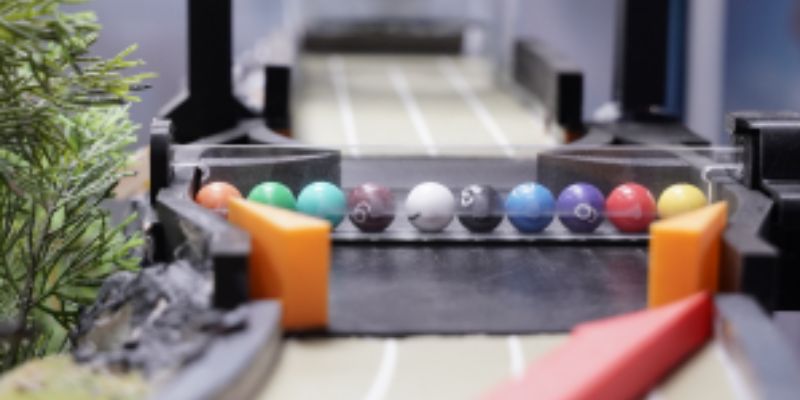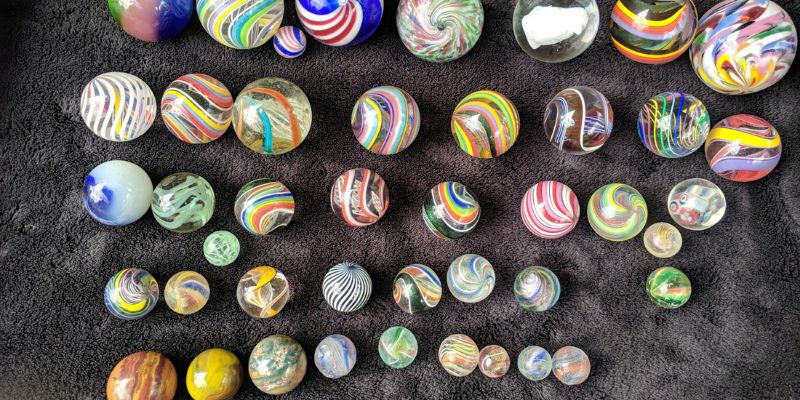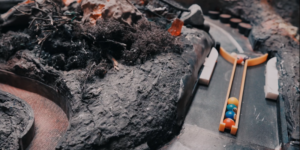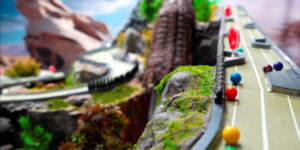In the exciting world of marble racing, choosing the right marble can be the difference between a glorious win and a disappointing defeat. The type of marble you select impacts its speed, control, and overall performance on the track.
In this guide, we’ll delve into the fascinating world of marble types for racing. We’ll explore different materials, sizes, and weights, helping you understand how they affect your marble’s performance and how to choose the perfect one for your next race. Whether you’re a beginner or a seasoned pro, this guide will equip you with the knowledge you need to pick the winning sphere.
Why marble choice matter in marble racing
The world of marble racing is filled with vibrant colors, intricate tracks, and nail-biting competition. But did you know that the type of marble you choose can significantly impact your chances of winning? It’s not just about aesthetics; the physics behind different marble materials and sizes can make all the difference in a race.

The Physics of Performance
Gravity is the driving force behind marble racing, pulling your sphere down the track. However, the marble’s material and size determine how strongly gravity affects it. Heavier marbles, like steel, have more momentum and are less likely to be knocked off course by obstacles or other marbles. On the other hand, the texture of both the marble and the track surface plays a crucial role. Smooth glass marbles tend to glide effortlessly on slick plastic tracks, while rougher stone marbles might find more grip on wooden surfaces.
Understanding this interplay can help you choose the right marble for the right track. Rolling resistance, which refers to the energy lost as a marble rolls, also affects performance. Larger marbles generally have lower rolling resistance, meaning they maintain speed better over longer distances. However, smaller marbles can be more agile in navigating tight corners.
Tailoring to Track Type
Not all tracks are created equal. Some are smooth and fast, while others are rough and bumpy. The type of track you’re racing on can dictate the ideal marble choice. For instance, on smooth tracks like plastic or polished wood, glass or ceramic marbles shine because their smooth surfaces minimize friction, allowing for faster speeds. On rough tracks like wood or concrete, steel or stone marbles with a bit more grip might perform better, offering better control and stability on uneven terrain. For tracks with jumps, heavier marbles like steel are often preferred because they maintain momentum better and are less likely to bounce off course upon landing.
The Competitive Edge
Choosing the right marble can give you a significant advantage over your opponents. For example, lighter marbles, like glass, accelerate faster off the starting line, potentially giving you an early lead. Heavier marbles, like steel, maintain their line better, especially on tracks with bumps or collisions. Smaller marbles can navigate tight turns and complex obstacles more easily.
Experimentation and Strategy
The key to finding the winning marble is experimentation. Try different types on various tracks and observe their performance. Note how each marble reacts to different surfaces, obstacles, and race formats. This hands-on approach will help you develop an intuitive understanding of marble physics and choose the perfect sphere for each race.
Popular marble materials for racing
In the exciting world of marble racing, selecting the right marble is a strategic decision that can significantly impact your chances of victory. It’s not just about aesthetics; different materials offer unique properties that influence speed, grip, and overall performance on the track. Let’s explore the most popular marble materials used in racing and the advantages and disadvantages of each.

Glass Marbles
Glass marbles are the most common type used in marble racing, known for their smooth surface and vibrant colors. They’re a favorite among racers due to several key attributes:
- Speed: The smooth surface of glass marbles creates minimal friction with most track materials, allowing them to glide swiftly and achieve impressive speeds.
- Variety: Glass marbles come in a vast array of colors, patterns, and sizes, adding visual flair to any race.
- Affordability: They are relatively inexpensive and readily available, making them an ideal choice for beginners and casual racers.
However, glass marbles do have their drawbacks:
- Fragility: They are prone to chipping, cracking, or even shattering upon impact with hard surfaces or other marbles.
- Lightweight: Their lighter weight can make them more susceptible to being knocked off course by obstacles or other marbles.
Steel Marbles
Steel marbles are the powerhouses of the marble racing world. Their density and weight give them significant advantages on certain tracks:
- Momentum: Steel marbles have higher momentum than glass marbles, allowing them to maintain speed on longer straightaways and power through obstacles.
- Durability: They are incredibly durable and resistant to chipping or breaking, making them a popular choice for intense competitions.
- Magnetic Properties: Some steel marbles are magnetic, opening up possibilities for interactive tracks with magnetic elements.
However, steel marbles are not without their drawbacks:
- Cost: They tend to be more expensive than glass marbles.
- Agility: Their heavier weight can make them less agile and harder to control on tracks with tight turns.
Ceramic Marbles
Ceramic marbles offer a unique blend of speed and durability. They are often handcrafted and come in a variety of beautiful designs and patterns:
- Smoothness: Ceramic marbles have a smooth surface that minimizes friction, allowing them to glide effortlessly on the track.
- Durability: They are more resistant to chipping than glass marbles, although not as sturdy as steel.
However, ceramic marbles can be relatively expensive and may not be as widely available as glass or steel marbles.
Other Marble Materials
- Agate: Known for their unique patterns and colors, agate marbles are made from natural stone. However, they can be more expensive and less predictable in their rolling behavior compared to other materials.
- Plastic: Lightweight and affordable, plastic marbles are safe for younger children. However, they are less durable and may not perform as well as other materials in competitive races.
- Wood: Some marble racing enthusiasts create their own wooden marbles for a personalized touch. Wooden marbles can vary in weight and texture, adding another layer of complexity to the race.
The Right Marble for the Right Track
Choosing the perfect marble for your race track depends on several factors, including the track material, layout, and your personal preferences. Experiment with different marble types to discover which ones perform best on your particular track and racing style. Remember, there’s no one-size-fits-all answer; the best marble is the one that brings you the most joy and success on the track.
Size and weight
Marble size and weight are more than just numbers; they’re crucial factors that can significantly impact your marble’s performance on the track. Think of it like choosing the right athlete for a particular sport. A sprinter might be lean and agile, while a weightlifter needs to be strong and powerful. Similarly, different marble sizes and weights are suited to different racing styles and track designs.
Standard Sizes: Big or Small?
Marble racing doesn’t have a one-size-fits-all standard, but there are some common sizes you’ll encounter:
- 16mm: This is a popular choice for many leagues and hobbyists. It offers a good balance between speed and control, making it versatile for various track types.
- 19mm: Slightly larger and heavier than 16mm marbles, these tend to have more momentum, which can be beneficial on tracks with long straightaways or where maintaining speed is crucial.
- Other Sizes: You might also find smaller marbles (e.g., 14mm) for precision races or larger ones (e.g., 25mm) for more dramatic visual effects.
How Size Affects Performance
- Smaller Marbles: These nimble racers accelerate quickly and excel at navigating tight turns and complex obstacles. However, their lighter weight means they might be more easily bumped off course by other marbles or track imperfections. They’re like the agile sprinters of the marble world.
- Larger Marbles: These heavyweights pack a punch with their momentum. They maintain speed well on straightaways and can power through obstacles with ease. However, their size and weight can make them slower to accelerate and less maneuverable in tight spaces. Think of them as the powerful marathon runners of marble racing.
Weight Considerations
The weight of a marble directly impacts its behavior on the track:
- Heavy Marbles: They tend to be more stable and less affected by bumps or other marbles. However, they can be slower to accelerate and change direction. Steel marbles are a prime example of this.
- Light Marbles: These marbles are more agile and responsive to changes in direction, making them ideal for tracks with lots of twists and turns. However, they can be more easily knocked off course and may struggle to maintain speed on longer straightaways. Glass marbles typically fall into this category.
Finding the Perfect Fit
The ideal size and weight for your marble will depend on various factors:
- Track Type: A smooth, flat track might favor a smaller, lighter marble, while a track with jumps and bumps might call for a heavier, more stable option.
- Race Format: If you’re participating in a speed race, a smaller, faster marble might be your best bet. For endurance races or team events where stability is crucial, a heavier marble might be a wiser choice.
- Personal Preference: Ultimately, the best marble is the one that feels right in your hand and matches your racing style. Some racers prefer the agility of smaller marbles, while others enjoy the power and momentum of larger ones.
Don’t be afraid to experiment with different sizes and weights to find your perfect match! The joy of marble racing lies in discovering the combination that brings you the most success and excitement on the track.
How to get racing marbles
Ready to dive into the exciting world of marble racing? One of the first steps is acquiring the right marbles. While you might have a few marbles lying around the house, not all marbles are created equal when it comes to racing. Let’s explore the different avenues for obtaining high-quality racing marbles that will help you unleash your inner champion.

Specialty Marble Retailers
For the best selection and quality, consider visiting a specialty retailer either online or in-person. These stores cater specifically to marble enthusiasts, offering a wide range of materials, sizes, and styles. They also provide expert advice on choosing the right marbles for your track and racing style.
Online Retailers
Reputable online stores like Mega Marble, Jelle’s Marble Runs Shop, and Etsy offer a vast selection of racing marbles from around the world. You can browse different categories, filter by material, size, or color, and even find rare or collectible marbles.
Local Hobby Stores
Some local hobby shops or game stores may carry a limited selection of racing marbles. This is a great option if you want to see and feel the marbles in person before making a purchase.
Marble Shows and Conventions
For serious marble enthusiasts, attending a marble show or convention is a must. These events bring together collectors, sellers, and enthusiasts, offering a unique opportunity to discover rare and unique marbles. You’ll find a wide variety of antique marbles, handmade marbles, and even marbles made from exotic materials.
DIY Marble Making
For the ultimate in customization, you can try making your own marbles. Techniques range from simple clay sculpting to advanced methods like glass blowing. DIY marble making is a fun and rewarding project, allowing you to create truly unique marbles that reflect your personal style.
Repurposing Everyday Objects
Don’t overlook everyday objects as potential racing marbles. If you’re just starting out or on a budget, you can experiment with items like:
- Ball Bearings: These small, metal spheres are often perfectly round and smooth, making them ideal for racing.
- Beads: Large beads with smooth surfaces can also be used as racing marbles.
- Nuts and Bolts: Certain types of nuts and bolts, like hex nuts or acorns, can make surprisingly good racing marbles.
Trading and Swapping
The marble racing community is known for its generosity and willingness to share. If you’re looking for specific marbles or want to expand your collection, consider trading or swapping with other enthusiasts. Online forums and social media groups are great places to connect with other collectors and find potential trading partners.
Remember, the best marble for racing is the one you enjoy using the most. Experiment with different types and sizes to discover the perfect fit for your track and racing style. Whether you choose to buy, build, or trade your marbles, the most important thing is to have fun and enjoy the thrill of the race!






